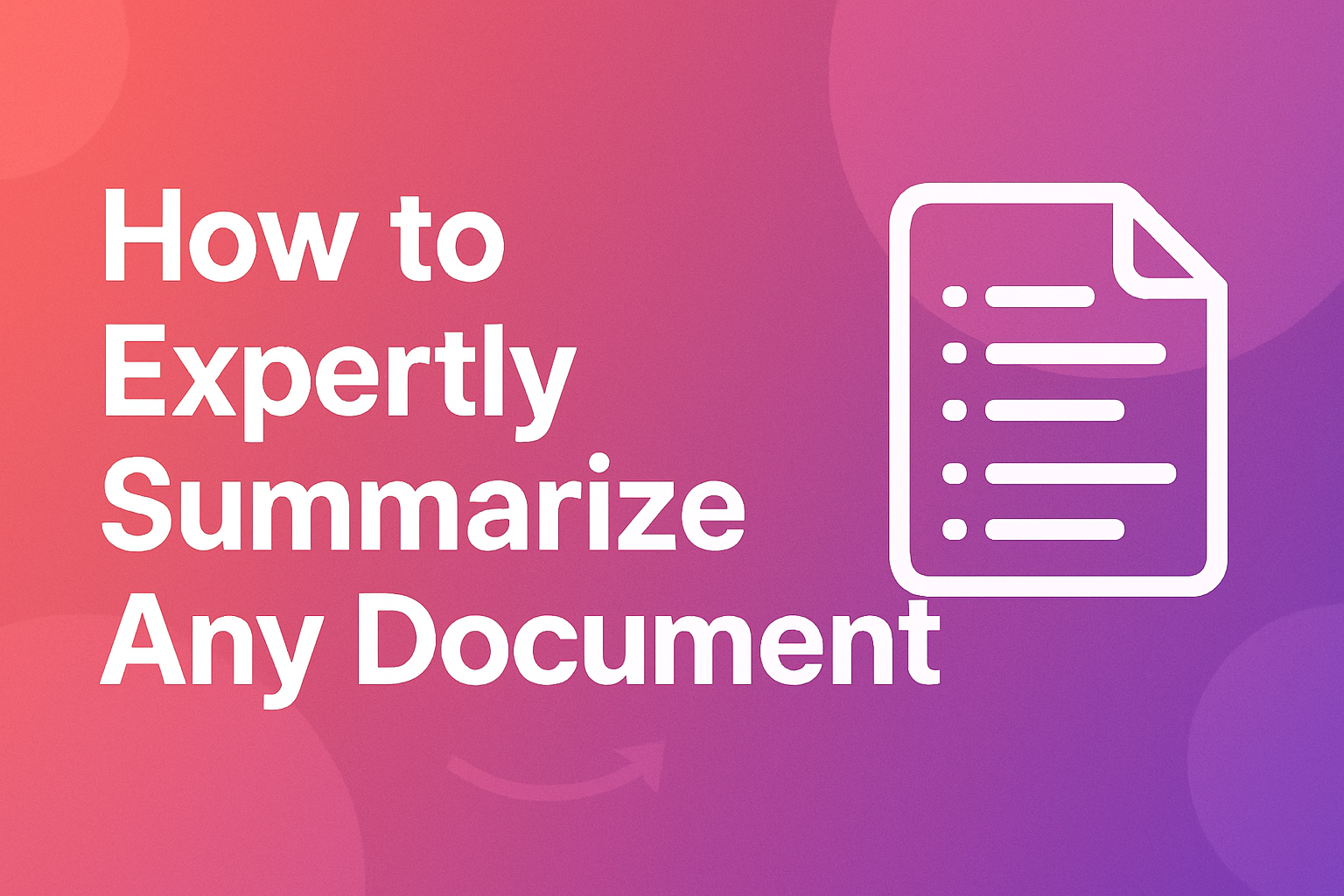How to Expertly Summarize Any Document


Summarizing documents effectively is a valuable skill in academia, business, and everyday life. Whether you're condensing research papers, business reports, or articles, a well-crafted summary captures the essence of the original text while saving time for both you and your readers.
Why Summarization Matters
Effective summarization serves multiple purposes:
- Information Processing: It helps manage information overload by distilling key points.
- Knowledge Retention: Summarizing improves comprehension and memory of material.
- Time Efficiency: Well-written summaries save readers time without sacrificing understanding.
- Communication Skills: The process sharpens your ability to identify and articulate core ideas.
Types of Document Summaries
Descriptive Summaries
A descriptive summary outlines what the document contains without evaluating the content. It's objective, focusing on main topics and structure rather than conclusions or implications.
Informative Summaries
This type captures the main arguments, evidence, and conclusions of the original text. It's comprehensive enough that the reader might not need to consult the original for basic understanding.
Critical Summaries
Critical summaries include your evaluation of the document's strengths, weaknesses, and relevance. This type is common in academic literature reviews and professional critiques.
Executive Summaries
Used primarily in business contexts, executive summaries are comprehensive overviews designed for decision-makers. They typically include findings, recommendations, and conclusions.
The 5-Step Process for Expert Summarization
1. Active Reading
Before writing, engage deeply with the text:
- Skim the document to grasp its structure and purpose
- Identify section headings, topic sentences, and conclusions
- Note visual elements like charts or graphs and their significance
- Pay attention to signaling words that indicate important information
2. Identify Core Components
For every document, determine:
- The main thesis or central argument
- Key supporting points and evidence
- Significant findings or conclusions
- Methodologies used (if applicable)
- Implications or recommendations
3. Organize Your Summary Structure
Create a logical framework:
- Begin with a brief introduction stating the document's purpose
- Arrange key points in order of importance or as they appeared in the original
- Ensure logical flow between ideas
- Plan for a concise conclusion that captures the document's significance
4. Write Concisely
When drafting:
- Use your own words to demonstrate understanding
- Maintain objectivity unless writing a critical summary
- Eliminate tangential information and examples
- Consolidate related points when possible
- Aim for 10-25% of the original document's length
5. Review and Refine
Polish your summary:
- Verify that all key points are included
- Check for accuracy against the original
- Eliminate redundancies and unnecessary detail
- Ensure the summary can stand alone without the original document
- Proofread for clarity and cohesion
Technology-Assisted Summarization
Modern tools can enhance your summarization process:
AI-Powered Summarization Tools
Platforms like Plagly offer AI-assisted summarization features that can:
- Generate initial summary drafts
- Identify key concepts from lengthy documents
- Provide multiple summary lengths based on your needs
- Help maintain the original document's tone and intent
Note-Taking Applications
Tools like Notion, Evernote, or OneNote can help organize information during the reading phase, making the summarization process more efficient.
Common Pitfalls to Avoid
Including Too Much Detail
A good summary is concise. Avoid the temptation to include interesting but non-essential information.
Misrepresenting the Original
Ensure your summary accurately reflects the author's intent and main arguments, even if you disagree with them.
Relying Too Heavily on Quotes
While occasional direct quotes may be appropriate, summaries should primarily be in your own words.
Neglecting Context
Provide enough background information so your summary makes sense to someone unfamiliar with the original document.
Tailoring Summaries for Different Audiences
Consider who will read your summary:
- Academic audiences may need more methodological details and theoretical frameworks
- Professional settings often require actionable insights and business implications
- General readers benefit from clear explanations and minimal jargon
Conclusion
Expertly summarizing documents is both an art and a science. With practice, you'll develop an instinct for identifying what's truly important in a text and presenting it concisely. The ability to distill complex information into accessible summaries is increasingly valuable in our information-rich world. By following the structured approach outlined above and leveraging appropriate tools, you can master this essential skill and enhance both your learning and professional communication.